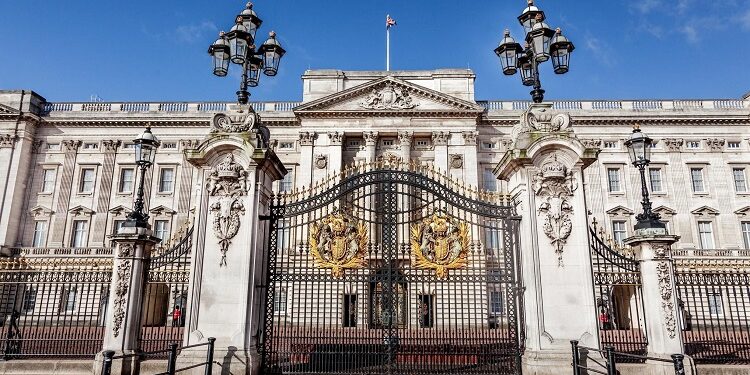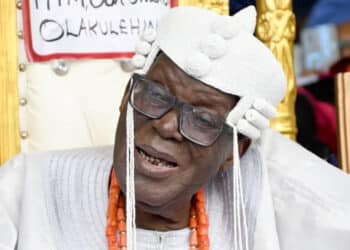The news of Queen Elizabeth II’s death, the longest-serving monarch since the beginning of modern history, shook the whole world into mourning. The glorious monarch ruled over the United Kingdom for over 70 years, witnessing the appointment of 15 UK prime ministers, 12 United States presidents, and all the military and civilian presidents of Nigeria.
Buckingham Palace announced her death on Thursday, September 8, 2022.
Buckingham Palace said: “The Queen died peacefully at Balmoral this afternoon. The King and The Queen Consort will remain at Balmoral this evening and return to London tomorrow.” However, before Queen Elizabeth II’s ascension, we take a look back at the monarchs before her reign.
Here is the complete list:
QUEEN ANNE 1702 – 1714
At 37 years of age, Anne, daughter of James II, ascended the throne as the first British monarch. According to Britannica, she was born on February 6, 1665, in London. It was gathered that she became queen in March 1702, where she ruled until 1714 after her demise.
KING GEORGE I 1714 -1727
Son of Sophia and the Elector of Hanover, great-grandson of James I. The 54-year-old George arrived in England and could speak only a few words of English with his 18 cooks and two mistresses in tow. George never learned English, so the conduct of national policy was left to the government of the time, with Sir Robert Walpole becoming Britain’s first Prime Minister. George spent little time in England – he preferred his beloved Hanover, although he was implicated in the South Sea Bubble financial scandal in 1720.
KING GEORGE II 1727 – 1760
The only son of George I, Prince Charles Edward Stuart, was more English than his father but still relied on Sir Robert Walpole to run the country. George was the last English king to lead his army into battle at Dettingen in 1743. In 1745, the Jacobites tried once again to restore a Stuart to the throne. Prince Charles Edward Stuart, ‘Bonnie Prince Charlie,’ landed in Scotland.
He was routed at Culloden Moor by the army under the Duke of Cumberland, known as ‘Butcher’ Cumberland. Bonnie Prince Charlie escaped to France with the help of Flora MacDonald, and finally died a drunkard’s death in Rome.
KING GEORGE III 1760 – 1820
He was the grandson of George II and the first English-born and English-speaking monarch since Queen Anne. His reign was one of elegance and the age of some of the greatest names in English literature – Jane Austen, Byron, Shelley, Keats, and Wordsworth.
It was also the time of great statesmen like Pitt and Fox and great military men like Wellington and Nelson. In 1773, the ‘Boston Tea Party was the first sign of the troubles that would come in America. The American Colonies proclaimed their independence on July 4th, 1776. George was well-meaning but suffered from a mental illness due to intermittent porphyria and eventually became blind and insane. His son ruled as Prince Regent after 1811 until George’s death.
KING GEORGE IV 1820 – 1830
Known as the ‘First Gentleman of Europe’. Although he sincerely appreciated art and architecture, his private life was chaotic. He married twice, once in 1785 to Mrs Fitzherbert, secretly as she was a Catholic, and then in 1795 to Caroline of Brunswick. Mrs Fitzherbert remained the love of his life. Caroline and George had one daughter, Charlotte, in 1796, but she died in 1817. George was considered a great wit but was also a buffoon, and his death was hailed with relief.
KING WILLIAM IV 1830 – 1837
Known as the ‘Sailor King’ (for 10 years the young Prince William, brother of George IV, served in the Royal Navy), he was the third son of George III. Before his accession, he lived with Mrs Jordan, an actress, by whom he had ten children. When Princess Charlotte died, he had to marry to secure the succession. He married Adelaide of Saxe-Coburg in 1818. He had two daughters, but they did not live. He hated pomp and wanted to dispense with the Coronation. The people loved him because of his lack of pretension. During his reign, Britain abolished slavery in the colonies in 1833. The Reform Act was passed in 1832, which extended the franchise to the middle classes based on property qualifications.
QUEEN VICTORIA 1837 – 1901
Victoria was the only child of Princess Victoria of Saxe-Coburg and Edward, the Duke of Kent, the fourth son of George III. The throne Victoria inherited was weak and unpopular, and her Hanoverian uncles had been treated with irreverence.
In 1840, she married her cousin, Albert of Saxe-Coburg. Albert exerted tremendous influence over the Queen and, until his death, was the virtual ruler of the country. The Queen withdrew from public life after the death of Albert in 1861 until her Golden Jubilee in 1887. Her reign saw the British Empire double in size, and in 1876, the Queen became Empress of India, the ‘Jewel in the Crown’. When Victoria died in 1901, the British Empire and world power reached their highest point. She had nine children, 40 grandchildren, and 37 great-grandchildren, scattered all over Europe.
KING EDWARD VII 1901 – 1910
A much-loved king, the opposite of his dour father. He loved horse racing, gambling, and women! This Edwardian Age was one of elegance. Edward had all the social graces and many sporting interests, such as yachting and horse racing – his horse Minoru won the Derby in 1909. Edward married the beautiful Alexandra of Denmark in 1863 and had six children. Read more: https://www.legit.ng/world/europe/1491089-full-list-british-monarchs-queen-elizabeth-ii/
The eldest, Edward Duke of Clarence, died in 1892, just before he was to marry Princess Mary of Teck. When Edward died in 1910, it is said that Queen Alexandra brought his current mistress, Mrs Keppel, to his bedside to bid her farewell. His best-known mistress was Lillie Langtry, the ‘Jersey Lily’.
KING GEORGE V 1910 – 1936
George had not expected to be king, but he became the heir-apparent when his elder brother died. He had joined the Navy as a cadet in 1877 and loved the sea. He was a bluff, hearty man with a ‘quarter-deck’ manner. In 1893, he married Princess Mary of Teck, his dead brother’s fiancée. His years on the throne were difficult; the First World War in 1914 – 1918 and the troubles in Ireland, which led to the creation of the Irish Free State, were considerable problems. In 1932, he began the royal broadcasts on Christmas Day, and in 1935, he celebrated his Silver Jubilee. His later years were overshadowed by his concern about the Prince of Wales and his infatuation with Mrs Simpson.
KING EDWARD VIII June 1936 – December 1936
Edward was the most popular Prince of Wales Britain had ever had. Consequently, when he renounced the throne to marry Mrs Wallis Simpson, the country found it almost impossible to believe. The people knew nothing about Mrs Simpson until early in December 1936. Mrs Simpson was an American, divorced woman with two husbands still living. This was unacceptable to the Church, as Edward had stated that he wanted her to be crowned with him at the Coronation which was to take place the following May. Edward abdicated in favour of his brother and took the title, “Duke of Windsor”. He went to live abroad.
KING GEORGE VI 1936 – 1952
George was a shy and nervous man with a very bad stutter, opposite his brother, the Duke of Windsor. Still, he had inherited the steady virtues of his father, George V. He was very popular and well-loved by the British. The prestige of the throne was low when he became king, but his wife, Elizabeth and his mother, Queen Mary, were outstanding in their support of him.
The Second World War started in 1939, and throughout, the King and Queen set an example of courage and fortitude. They remained at Buckingham Palace for the duration of the war despite the bombing, which occurred more than once. The two Princesses, Elizabeth and Margaret, spent the war years at Windsor Castle.
QUEEN ELIZABETH II 1952 – 2022

Elizabeth Alexandra Mary, or ‘Lilibet’ to close family, was born in London on 21 April 1926. Like her parents, Elizabeth was heavily involved in the war effort during the Second World War, serving in the women’s branch of the British Army known as the Auxiliary Territorial Service, training as a driver and mechanic. She married her cousin Prince Philip, Duke of Edinburgh, and they had four children: Charles, Anne, Andrew, and Edward. When her father, George VI, died, Elizabeth became Queen of seven Commonwealth countries: the United Kingdom, Canada, Australia, New Zealand, South Africa, Pakistan, and Ceylon (now known as Sri Lanka).
Elizabeth’s coronation in 1953 was the first to be televised, increasing popularity in the medium and doubling television license numbers in the UK. The huge popularity of the royal wedding in 2011 between the Queen’s grandson, Prince William, and the commoner Kate Middleton, now the Duke and Duchess of Cambridge, reflected the high profile of the British Monarchy at home and abroad. On 9th September 2015, Elizabeth became Britain’s longest-serving monarch, ruling longer than her great-great-grandmother Queen Victoria, who reigned for 63 years and 216 days. Her Majesty Queen Elizabeth II died at Balmoral on 8th September 2022 at 96. She was the longest-reigning monarch in the history of the United Kingdom, celebrating her Platinum Jubilee in June 2022.










